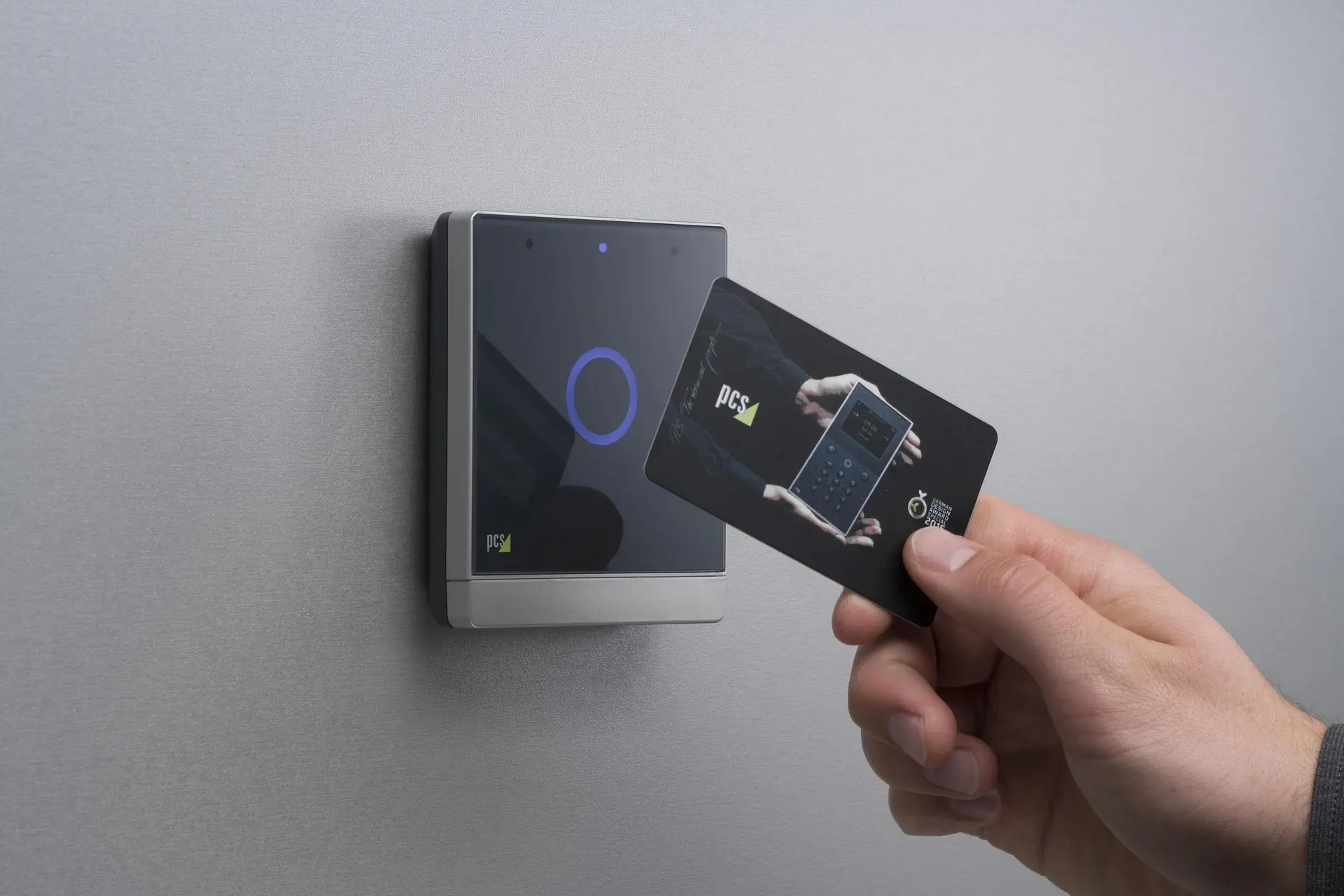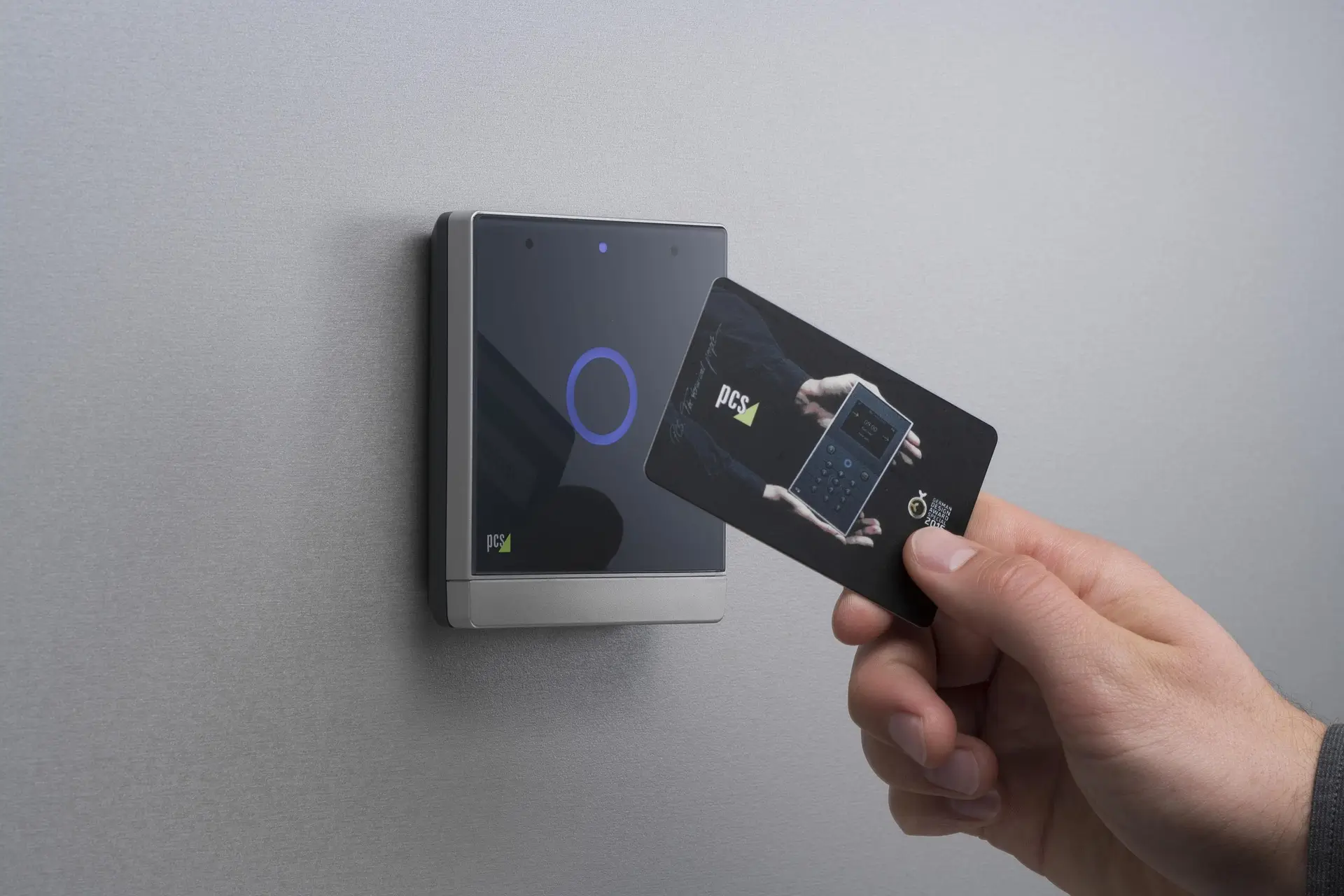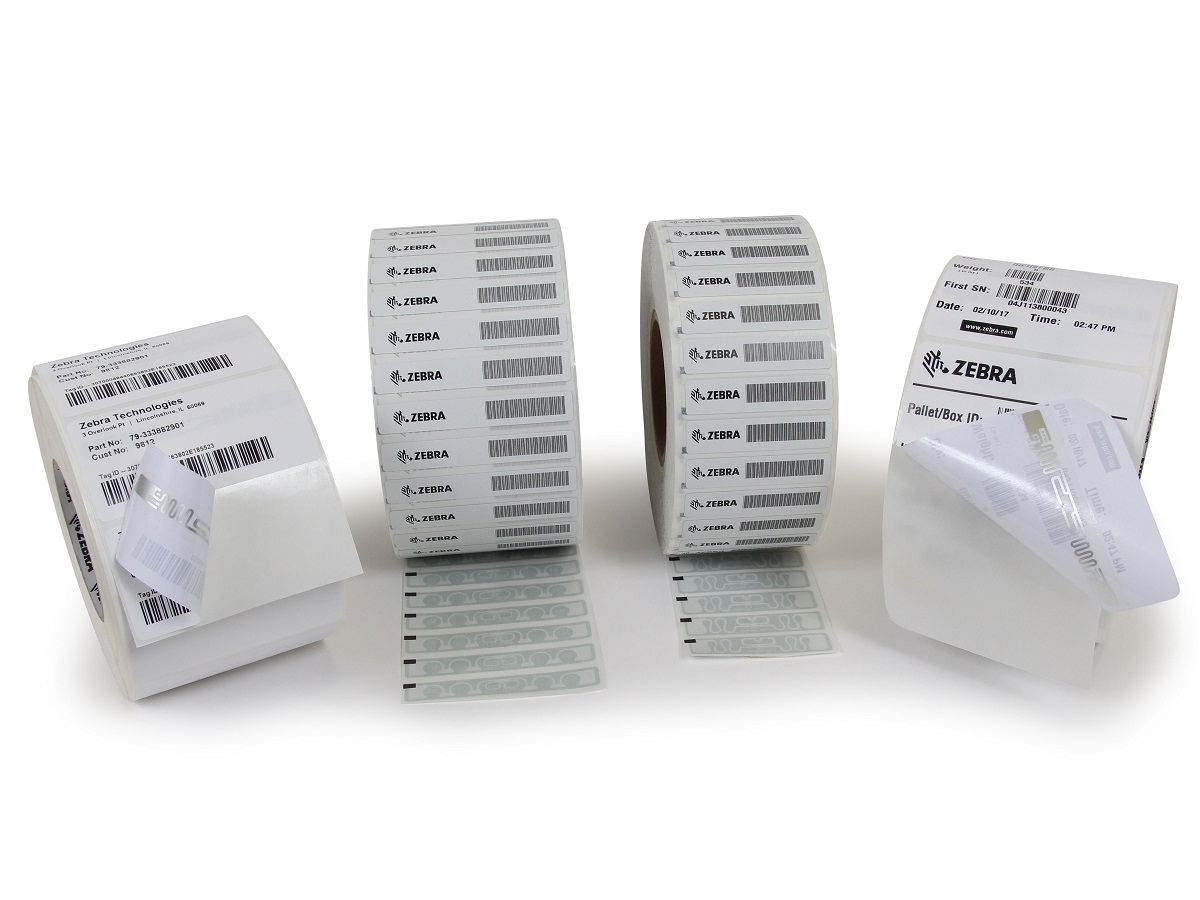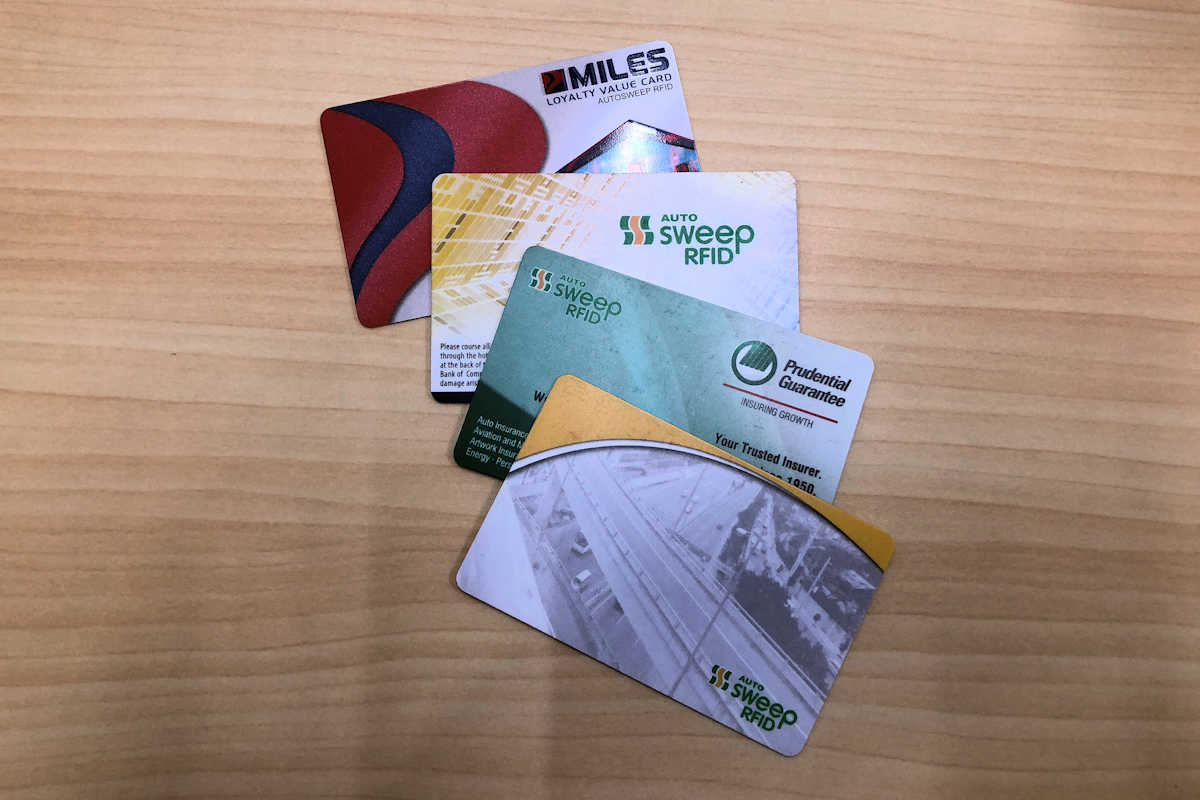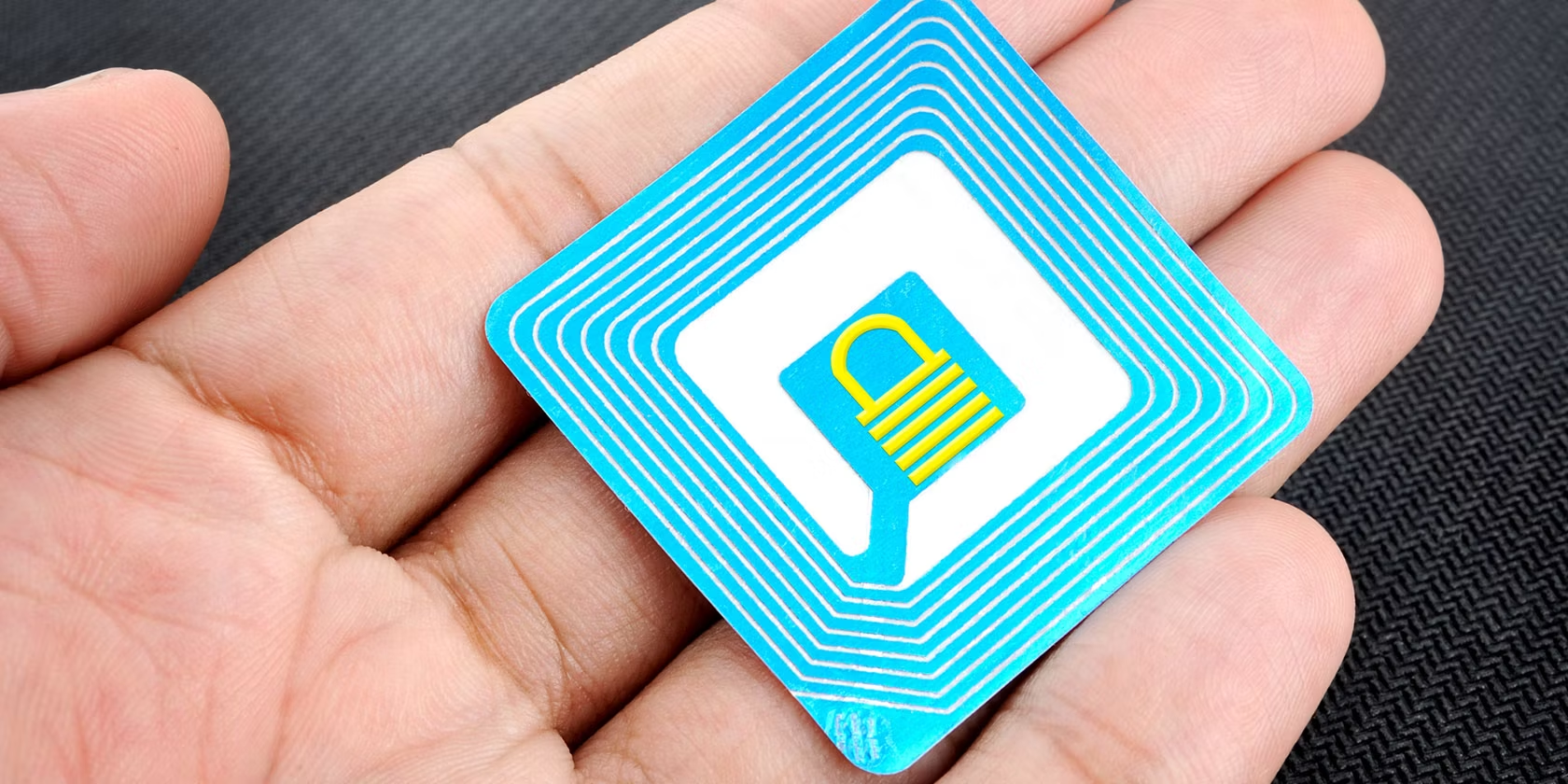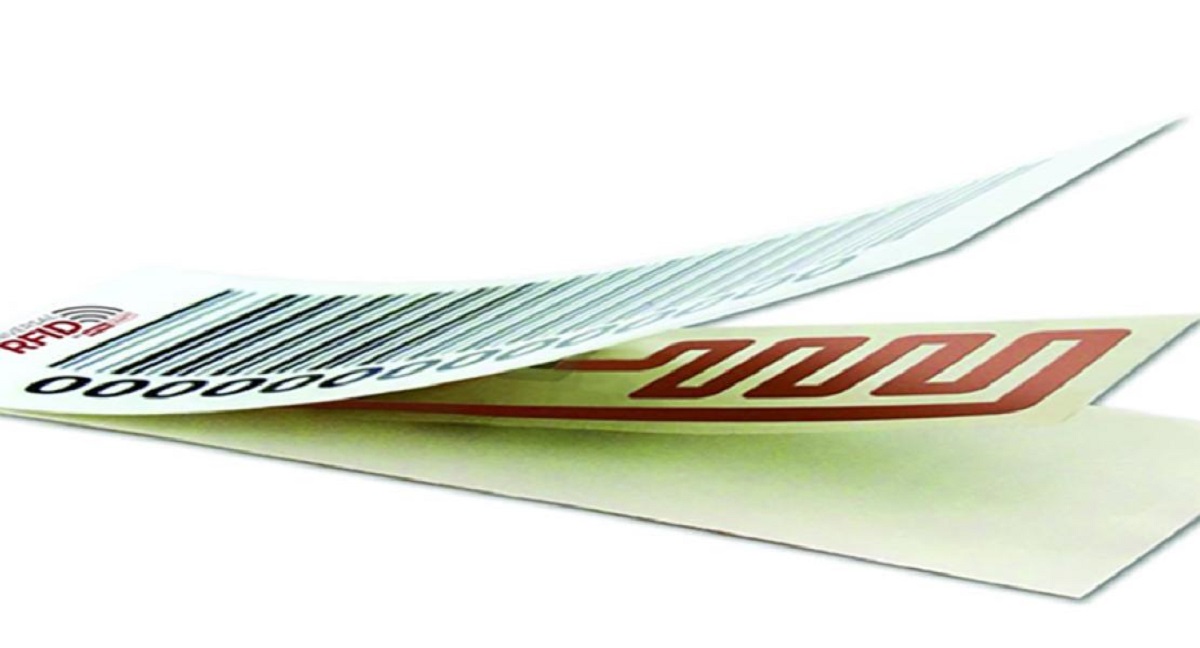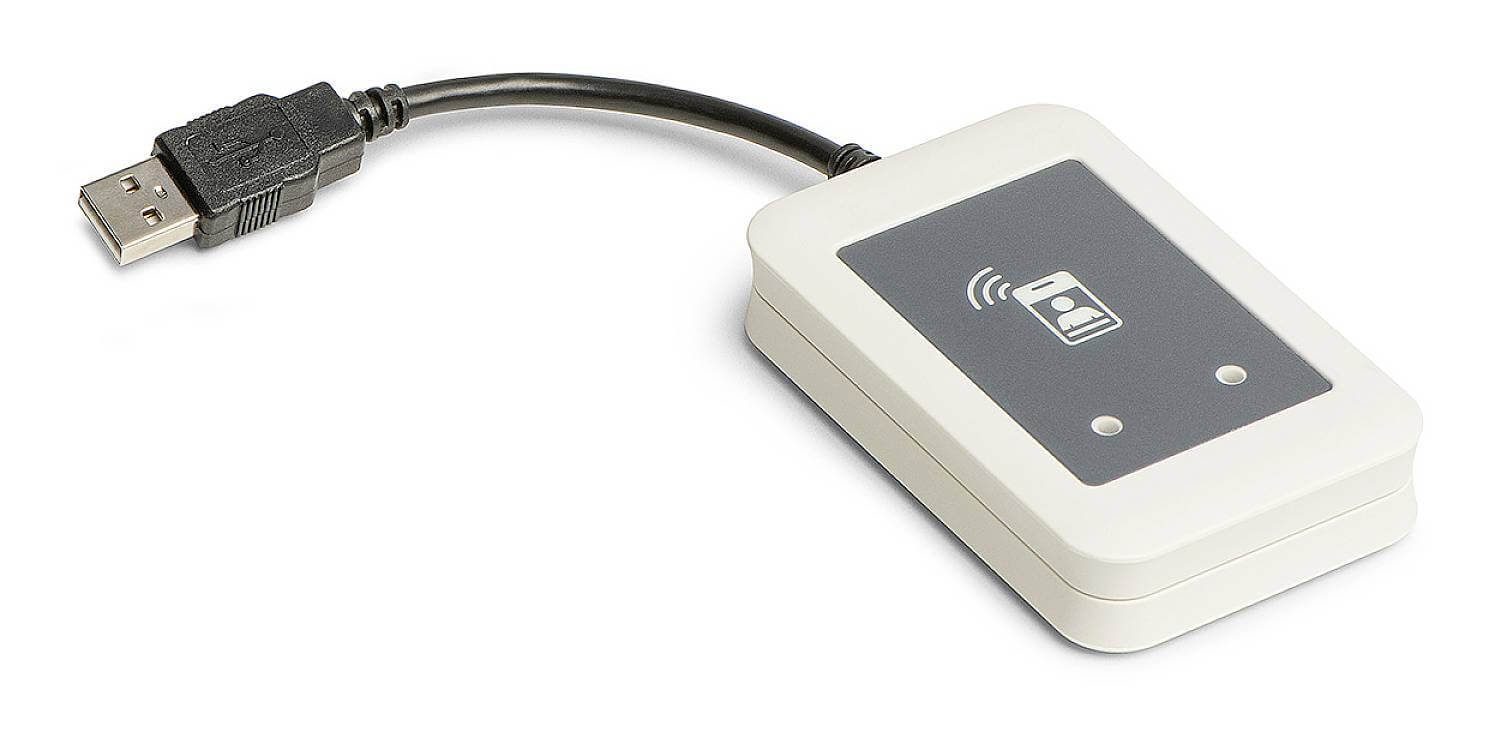Introduction
Welcome to the world of RFID! In this digital age, advancements in technology continue to revolutionize the way we live and work. One such technology that has gained significant attention is RFID, which stands for Radio Frequency Identification. From retail to healthcare, logistics to transportation, RFID has proven to be a game-changer across various industries.
RFID is a method of automatic identification and data capture that uses radio waves to communicate between a reader and a tag. Unlike traditional barcode scanners that require line-of-sight scanning, RFID allows for non-contact and seamless data transfer. The applications of RFID are vast and diverse, with its ability to enhance efficiency, accuracy, and security in various processes.
In this article, we will delve into the inner workings of RFID and explore its benefits and applications. We will also discuss different types of RFID, including tags and readers, and its role in supply chain management. However, it is important to acknowledge the security and privacy concerns associated with RFID implementation and explore potential solutions.
So, whether you’re a technology enthusiast, a business owner, or simply curious about the world around you, join us as we uncover the fascinating world of RFID and its impact on the present and future.
What is RFID?
RFID, or Radio Frequency Identification, is a technology that enables automatic identification and tracking of objects using radio waves. It consists of two main components – RFID tags and RFID readers. RFID tags, also known as transponders, are small electronic devices that contain a unique identifier and are attached to or embedded within objects. RFID readers, on the other hand, are devices that emit radio waves and capture the information transmitted by the tags.
RFID operates based on the principle of electromagnetic fields. When an RFID reader emits radio waves, the RFID tag within its range captures the energy from the waves and uses it to power up and transmit its unique identifier back to the reader. This communication occurs wirelessly, without the need for physical contact or line-of-sight like traditional barcode scanning methods.
One of the key advantages of RFID is its ability to read multiple tags simultaneously. Unlike barcodes, which are scanned one at a time, RFID readers can identify and interact with multiple tags within their range. This makes RFID technology highly efficient and enables faster and more streamlined processes in various industries.
RFID is used in a wide range of applications, including inventory management, asset tracking, access control, toll collection, and supply chain management, to name just a few. In retail stores, RFID tags attached to products allow for real-time inventory tracking, reducing out-of-stock situations and improving customer satisfaction. In healthcare settings, RFID is used for patient identification and medicine tracking to ensure accurate and efficient healthcare services.
Overall, RFID offers numerous advantages over traditional identification and tracking methods. Its non-contact nature, ability to read multiple tags at once, and improved accuracy and efficiency have made it an indispensable technology in today’s fast-paced world. As we explore further, we will take a closer look at the inner workings of RFID and the specific applications that benefit from this groundbreaking technology.
How does RFID work?
RFID technology relies on a system of radiofrequency communication between RFID tags and readers. The tags, also known as transponders, are small electronic devices that consist of a microchip and an antenna. The microchip, which contains a unique identifier and sometimes additional data storage, is responsible for storing and transmitting information. The antenna allows the tag to communicate with RFID readers.
When an RFID reader emits radio waves, it creates an electromagnetic field in its vicinity. This field powers up the RFID tags within its range. Depending on the type of RFID, the power is either supplied by the reader itself (passive RFID) or the tag has its own power source (active RFID). Passive RFID tags use the energy from the reader to activate the microchip and transmit data, while active RFID tags have their own power source, such as a battery, to power the microchip and enable communication.
When an RFID tag is within range of the reader’s electromagnetic field, the tag’s antenna captures the energy from the field and converts it into electrical power. This power is then used to activate the microchip on the tag. Once activated, the microchip transmits the unique identifier and any other stored data back to the reader through the tag’s antenna. The reader, equipped with its own antenna, detects the signals from the tag and decodes the transmitted data.
The communication between the RFID tag and reader occurs using specific frequencies specified by RFID standards. There are various frequency ranges used in RFID technology, including low frequency (LF), high frequency (HF), ultra-high frequency (UHF), and microwave frequency. Each frequency range has its own advantages and is suited for different applications. For example, LF tags are often used for access control systems, while UHF tags are commonly used in inventory management and supply chain applications.
In addition to the different frequency ranges, there are also different types of RFID systems, such as passive RFID, active RFID, and semi-passive RFID. Passive RFID systems are the most common and cost-effective, as they do not require their own power source. Active RFID systems, on the other hand, provide longer read ranges and are often used for tracking high-value assets. Semi-passive RFID tags combine the benefits of both passive and active systems.
In summary, RFID technology works by using radio waves to power and communicate with RFID tags. These tags, equipped with unique identifiers, are able to transmit their information back to RFID readers. The widespread adoption of RFID technology across various industries is a testament to its effectiveness and versatility in improving efficiency and accuracy in processes ranging from inventory management to access control.
Advantages of RFID
RFID technology offers several key advantages over traditional identification and tracking methods. These advantages have made RFID a popular choice in industries such as retail, logistics, healthcare, and manufacturing. Let’s explore some of the main benefits of RFID:
- Efficiency: RFID enables fast and seamless data capture without the need for manual scanning. Unlike barcodes, which require line-of-sight scanning, RFID tags can be read from a distance and multiple tags can be read simultaneously. This significantly speeds up processes such as inventory management, asset tracking, and supply chain management.
- Accuracy: RFID technology provides highly accurate and reliable data capture. The non-contact nature of RFID eliminates errors caused by human intervention or damaged barcodes. It ensures that the right information is captured quickly and efficiently, reducing the risk of mistakes and improving overall data accuracy.
- Automation: RFID allows for automation of various processes. With RFID tags attached to objects, tasks such as inventory counting, product authentication, and access control can be performed automatically and in real-time. This saves time, reduces labor costs, and minimizes the chances of human errors.
- Real-time visibility: RFID provides real-time visibility into the movement and location of objects. From tracking inventory in a warehouse to monitoring assets in a facility, RFID enables businesses to have accurate and up-to-date information on the whereabouts of their assets. This helps in improving operational efficiency and reducing losses due to misplaced or stolen items.
- Durability: The durability of RFID tags is another advantage. Unlike barcodes that can easily be damaged or rendered unreadable, RFID tags can withstand harsh environments, extreme temperatures, and moisture. This makes them suitable for a wide range of applications, including outdoor tracking, logistics, and healthcare.
- Security: RFID technology offers enhanced security features. The unique identifier of each RFID tag helps in preventing counterfeiting and unauthorized access. Additionally, RFID systems can be equipped with encryption and authentication protocols to ensure the integrity and confidentiality of the data being transmitted.
These advantages of RFID make it a valuable tool for businesses seeking to improve efficiency, accuracy, and visibility in their operations. By harnessing the power of RFID technology, organizations can streamline processes, reduce costs, and gain a competitive edge in today’s fast-paced and data-driven business landscape.
Applications of RFID
RFID technology has found numerous applications across various industries, revolutionizing the way businesses operate. Let’s explore some of the key applications of RFID:
- Inventory Management: RFID is widely used in inventory management systems to automate the tracking and monitoring of stock. With RFID tags attached to products or pallets, businesses can easily track their inventory levels in real-time, streamline the stock replenishment process, and reduce out-of-stock situations. This improves inventory accuracy, increases operational efficiency, and enhances customer satisfaction.
- Supply Chain Management: RFID plays a crucial role in the supply chain by enabling end-to-end visibility and traceability of goods. From manufacturing to distribution and retail, RFID allows businesses to track the movement of products, optimize logistics operations, and improve overall supply chain efficiency. It helps minimize errors, reduce theft, and ensure timely delivery of goods.
- Asset Tracking: RFID enables effective asset tracking in industries such as healthcare, IT, and manufacturing. By tagging assets such as equipment, tools, and vehicles, businesses can easily locate and manage their assets. RFID systems provide real-time information on asset whereabouts, maintenance schedules, and utilization, helping optimize asset allocation, reduce loss, and improve maintenance efficiency.
- Access Control: RFID-based access control systems enhance security and convenience in various settings. From office buildings to hospitals and events, RFID enables quick and secure entry by using RFID-enabled key cards or badges. Access control systems can easily grant or revoke access privileges, track employee or visitor movement, and ensure unauthorized individuals are kept out of restricted areas.
- Smart Retail: RFID technology has transformed the retail industry by enabling smart, personalized shopping experiences. RFID tags on products allow retailers to track inventory levels, automate checkout processes, and enhance product security. Additionally, RFID-powered smart shelves can detect when items are running low and trigger automatic restocking, improving supply chain efficiency and reducing out-of-stock situations.
- Animal Tracking: RFID is used for animal identification and tracking in agriculture and livestock management. By attaching RFID tags to animals, farmers can monitor their health, track their movement, and manage breeding and vaccination records effectively. This helps in improving livestock health, optimizing breeding programs, and enhancing overall farm productivity.
These are just a few examples of how RFID technology is transforming industries and improving business processes. As innovation continues, the applications of RFID are expected to expand even further, offering new possibilities for businesses to gain insights, improve efficiency, and deliver a seamless customer experience.
Different types of RFID
RFID technology encompasses various types that cater to different requirements and applications. Let’s explore the different types of RFID:
- Passive RFID: Passive RFID tags are the most common and cost-effective type of RFID technology. These tags do not have their own power source and rely on the energy from the RFID reader to power up and transmit data. Passive RFID tags have a limited read range and are commonly used in applications such as access control, inventory management, and retail.
- Active RFID: Active RFID tags have their own power source, usually a battery, which allows them to transmit signals over longer distances. These tags can operate independent of a reader’s power and have a longer read range compared to passive tags. Active RFID is commonly used for real-time location tracking, asset management, and vehicle tracking.
- Semi-passive RFID: Semi-passive RFID tags combine the benefits of both passive and active systems. They have their own power source to power the microchip but rely on the reader’s energy to transmit data. Semi-passive RFID tags offer a longer read range than passive tags and are commonly used in asset tracking and environmental monitoring.
- Low-Frequency (LF) RFID: LF RFID operates within the range of 30 kHz to 300 kHz. It offers a short read range but is less susceptible to interference from metal or water. LF RFID is commonly used in applications such as access control, animal tracking, and automotive immobilization systems.
- High-Frequency (HF) RFID: HF RFID operates within the range of 3 MHz to 30 MHz. It provides a moderate read range and is commonly used in contactless payment systems, library book tracking, and anti-counterfeiting applications.
- Ultra-High Frequency (UHF) RFID: UHF RFID operates within the range of 300 MHz to 3 GHz. It offers a long read range and high data transfer rates. UHF RFID is widely used in inventory management, supply chain logistics, and retail applications.
- Microwave Frequency RFID: Microwave frequency RFID operates above 3 GHz and provides a very long read range. This type of RFID is typically used in applications where long-range identification is required, such as toll collection, vehicle tracking, and electronic vehicle identification.
Each type of RFID technology has its own advantages and is suitable for specific use cases. The choice of the RFID type depends on factors such as read range requirements, environmental conditions, and cost considerations. As technology continues to advance, new types of RFID are being developed, offering even greater capabilities and possibilities in various industries.
RFID tags
RFID tags are integral to the functioning of RFID technology. These small electronic devices are attached to or embedded within objects, enabling their identification and tracking using radio waves. Let’s explore the components of RFID tags and the different types available:
Components of RFID tags:
RFID tags consist of two main components: a microchip and an antenna. The microchip, also known as an integrated circuit (IC), stores and processes data. It contains a unique identifier, often referred to as an Electronic Product Code (EPC), which distinguishes it from other tags. Some RFID tags also have additional storage capacity for storing data such as product information or logistics details. The antenna, on the other hand, enables communication between the tag and the RFID reader by transmitting and receiving radio waves.
Types of RFID tags:
There are various types of RFID tags available on the market, each designed for specific applications and environments. Here are some commonly used types:
- Passive RFID tags: Passive RFID tags do not have their own power source. They rely on the energy received from the RFID reader to power up and transmit data. These tags are cost-effective, small in size, and have a longer lifespan. They are commonly used for applications such as inventory management and access control.
- Active RFID tags: Active RFID tags have their own power source, typically a battery, which allows for longer read ranges and constant communication with the RFID reader. These tags are useful for applications that require real-time tracking and high mobility, such as asset management and container tracking.
- Semi-passive RFID tags: Semi-passive RFID tags, also known as battery-assisted passive (BAP) tags, have their own power source for operating the microchip, while relying on the reader’s energy to transmit data. These tags provide a longer read range compared to passive tags and are commonly used in applications like supply chain management and environmental monitoring.
- Low-Frequency (LF) RFID tags: LF RFID tags operate at frequencies between 30 kHz to 300 kHz. They have a short read range but are less affected by interference from metal or water. LF tags are commonly used for applications such as animal tracking and access control systems.
- High-Frequency (HF) RFID tags: HF RFID tags operate at frequencies between 3 MHz to 30 MHz. They provide a moderate read range and are commonly used in applications such as contactless payment systems and library book tracking.
- Ultra-High Frequency (UHF) RFID tags: UHF RFID tags operate at frequencies between 300 MHz to 3 GHz. They offer a long read range and high data transfer rates. UHF tags are widely used in applications such as retail inventory management and supply chain logistics.
The choice of RFID tags depends on factors such as read range requirements, environmental conditions, and cost considerations. Regardless of the type, RFID tags play a crucial role in enabling the identification, tracking, and management of objects in a wide range of industries.
RFID readers
RFID readers are vital components of RFID technology that facilitate communication with RFID tags. These devices emit radio waves and receive signals from RFID tags to capture and process data. Let’s explore the components and functionalities of RFID readers:
Components of RFID readers:
RFID readers consist of three main components: an antenna, a transceiver, and a controller. The antenna emits radio waves and captures the signals transmitted by RFID tags. The transceiver, which is connected to the antenna, converts the received signals into a readable format for the controller. The controller, an essential part of the reader, processes the received data, communicates with external systems, and performs necessary actions based on the information obtained.
Functionalities of RFID readers:
RFID readers perform various functions that enable the identification and tracking of objects. Some of the key functionalities include:
- Tag detection: RFID readers continuously emit radio waves to detect RFID tags within their range. When a tag comes into proximity, its presence is detected by the reader, triggering the communication process.
- Data capture: RFID readers capture the data transmitted by the RFID tags. This data can include unique identifiers, additional information stored in the tags’ memory, and other relevant data specific to the application.
- Data processing: Once the data is captured, RFID readers process it to make it usable and meaningful. This can involve decoding the information, validating it, and performing any necessary calculations or transformations.
- Integration: RFID readers can integrate with various systems, such as inventory management software, access control systems, or supply chain management platforms. This allows for seamless data exchange and integration with existing business processes.
- Communication: RFID readers can communicate with external devices, such as computers or mobile devices, to send and receive data. This enables centralized data management, real-time tracking, and remote control capabilities.
- Security: RFID readers can incorporate security features such as encryption and authentication protocols to ensure the integrity and confidentiality of the transmitted data. This helps protect against unauthorized access and data breaches.
RFID readers come in various forms, ranging from handheld devices to fixed readers installed at specific locations. The choice of an RFID reader depends on factors such as the required read range, the number of tags to be read simultaneously, and the environment in which it will be deployed.
In summary, RFID readers are crucial components in RFID systems as they enable the communication and data capture between RFID tags and external systems. They play a vital role in various industries, facilitating efficient inventory management, asset tracking, and access control, among other applications.
RFID in supply chain management
RFID technology has significantly transformed supply chain management, revolutionizing the way goods are tracked, managed, and delivered. Let’s explore how RFID is applied in supply chain management and the benefits it offers:
Inventory Management: RFID plays a crucial role in improving inventory management within the supply chain. With RFID tags attached to products, businesses can easily track inventory levels at various stages, from manufacturing to distribution and retail. This real-time visibility allows for accurate demand forecasting, reducing the risk of stockouts and improving overall inventory accuracy.
Streamlined Logistics: RFID enables more efficient and accurate logistics operations. RFID tags on shipping containers, pallets, or individual products allow for easy tracking and tracing throughout the supply chain. This streamlines transportation, reduces manual paperwork, and minimizes errors or instances of lost or misplaced items.
Enhanced Warehouse Management: RFID technology improves warehouse management processes. RFID tags can be used to track the movement of goods within the warehouse, reducing the time spent searching for specific items. This leads to faster order fulfillment, optimized warehouse layout, and improved overall operational efficiency.
Optimized Supply Chain Visibility: The use of RFID in supply chain management provides real-time visibility into the movement and location of goods. This visibility allows businesses to track and monitor shipments, optimize routing, and make informed decisions regarding scheduling and inventory replenishment. With accurate and up-to-date information, supply chain stakeholders can respond quickly to changes and ensure smoother operations.
Reduction in Loss and Theft: RFID technology helps minimize losses due to theft or misplaced items. By monitoring the movement of goods both within and outside the controlled environment, RFID enables businesses to identify and prevent potential security breaches promptly. This reduces inventory shrinkage, improves security, and increases overall supply chain integrity.
The implementation of RFID in supply chain management offers numerous benefits, including increased efficiency, reduced costs, and improved customer satisfaction. However, it is essential to consider the potential challenges associated with RFID adoption, such as initial investment costs, integration complexities, and data privacy concerns. By effectively addressing these challenges, businesses can fully harness the power of RFID technology to optimize their supply chain operations and gain a competitive edge.
Security and privacy concerns with RFID
While RFID technology offers significant benefits, it also raises important security and privacy concerns that need to be addressed. Let’s explore some of the key concerns associated with RFID implementation:
Unauthorized Access: One of the primary security concerns with RFID is the potential for unauthorized access to the data transmitted by RFID tags. If an attacker intercepts the communication between an RFID tag and reader, they may be able to capture sensitive information or clone tags for illicit purposes. This can result in breaches of personal information, counterfeiting, or unauthorized tracking.
Data Privacy: RFID tags often contain unique identifiers and additional data linked to the tagged objects. Depending on the application, this data may include personal information, purchasing habits, or sensitive business data. The collection and storage of such data raise concerns regarding privacy, as individuals or businesses may be unaware of how their information is being used or shared.
Tracking and Surveillance: The ability to track and monitor the movement of tagged objects can give rise to concerns around surveillance. For example, employees or customers may feel uncomfortable knowing that their movements are being tracked within a facility, even if it is for legitimate purposes such as access control or inventory management. It is crucial to establish transparent policies and safeguards to address these concerns and protect individual rights.
Data Breaches: RFID systems that store data, such as inventory records or customer information, may be vulnerable to data breaches. If proper security measures are not in place, hackers could gain unauthorized access to the system and compromise the stored data. This highlights the importance of implementing robust security protocols to protect sensitive information and prevent unauthorized access.
Interference and Jamming: RFID systems operating at certain frequencies may be susceptible to interference or jamming. This can disrupt the communication between RFID tags and readers, causing data loss or incorrect readings. Ensuring proper frequency management and implementing anti-jamming measures are crucial to maintaining reliable and secure RFID systems.
Addressing security and privacy concerns with RFID requires a multi-faceted approach. Measures such as encryption, authentication protocols, access controls, and secure data management practices can help mitigate risks. Additionally, transparency and clear communication with individuals or stakeholders affected by RFID implementation can build trust and alleviate privacy concerns.
As RFID continues to evolve, it is essential for organizations to prioritize security and privacy considerations to ensure the responsible and ethical use of this technology. By taking proactive measures and adopting best practices, businesses can leverage the benefits of RFID while safeguarding data and protecting the privacy of individuals involved.
Conclusion
RFID technology has emerged as a powerful tool in a wide range of industries, offering efficient and accurate identification, tracking, and data capture capabilities. From inventory management and supply chain logistics to access control and asset tracking, RFID has revolutionized the way businesses operate and manage their operations.
With RFID, businesses can streamline processes, improve operational efficiency, and enhance customer satisfaction. The ability to read multiple tags simultaneously, non-contact data capture, and real-time visibility provide numerous advantages over traditional identification and tracking methods. RFID has enabled businesses to make data-driven decisions, reduce costs, and gain a competitive edge in today’s fast-paced markets.
However, the widespread adoption of RFID also brings security and privacy concerns that need to be addressed. Unauthorized access, data privacy, tracking and surveillance, data breaches, and interference are some of the challenges that must be properly managed. By implementing robust security protocols, transparent policies, and privacy safeguards, businesses can mitigate risks and ensure the responsible use of RFID technology.
As RFID technology continues to evolve, it is important for organizations to stay informed about the latest advancements, best practices, and regulations. By staying proactive and adapting to new developments, businesses can unlock even greater potential for RFID in improving efficiency, accuracy, and visibility in their operations.
In conclusion, RFID technology has transformed various industries and continues to shape the way we track, manage, and interact with objects. As the adoption of RFID expands, businesses must strike a balance between reaping the benefits of RFID and addressing the associated security and privacy concerns. By doing so, they can harness the true potential of RFID technology to drive innovation, improve operational efficiency, and deliver exceptional experiences to customers.







